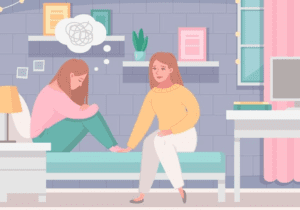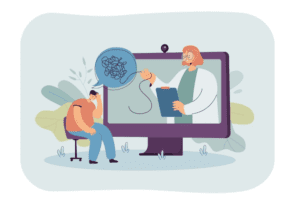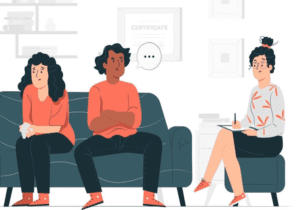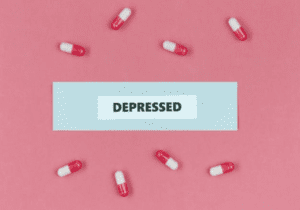Understanding the Nuances of Therapeutic Engagement
This article has been researched and written by Sara Caroppo. AI has not been used in producing this article.
It is a familiar scene in private practice: a teenager sits opposite you, not because they chose to be there, but because their parents did. The commitment to therapy is external, and the young person’s body language makes it clear they’d rather be anywhere else.
Having worked in schools in England and Dubai, as well as private clinics and charities, I have seen myself how the origin of the decision to attend therapy changes the entire process. In school counselling or walk-in settings, a young person often makes that choice themselves, however hesitant, and that single act of agency changes the starting point completely.
When a client seeks therapy on their own terms, there is already a seed of awareness and willingness to engage. They may be nervous or sceptical, but they have acknowledged something is wrong and are curious about finding solutions. That initial decision means the work can begin more directly; the focus can move to understanding and change, rather than first convincing them that therapy is even relevant.
In private practice, it is often the parents who have noticed a problem: the irritability, the withdrawal, the sudden drop in grades. The young person, however, may see none of this as an issue. I recently worked with a client who had no belief that anything needed to change, no goal to achieve, and no wish to be there. Her defiance towards her parents was so ingrained that she actively worked to derail therapy, not because she disliked me, but because sabotaging the process was, in fact, her ultimate act of rebellion. These are the moments when the “solution before problem” paradox appears. The adults have identified the problem, whilst the young person hasn’t, and sometimes even refuses to. Before any meaningful therapeutic work can happen, we have to bridge that gap.
The early phase in these cases is not about immediate change. It is, in fact, about building trust so the young person feels understood, not managed. Helping them connect their own experiences with the idea that change might be useful, and reframing therapy as something they own, rather than something imposed on them. Inevitably, this can take weeks or even months, and that is even before the “real” work begins. This is why therapy in private practice can sometimes be perceived as slow compared to other settings. The reality is that we are not just addressing the presenting concerns; we are dismantling resistance, fostering awareness, and creating a space where internal motivation can grow.
Once a young person moves from “I’m here because they sent me” to “I’m here because I want to be,” the work gains depth and momentum. In schools and walk-ins, you may start with that commitment already in place. In private practice, we often have to grow it from scratch, and that takes time. But the progress that follows is more resilient because it’s theirs.
Gentle Parenting: What is it and How to Try it Yourself
When it comes to raising children, no one has all the answers. Every parent and child have unique challenges and needs. Navigating these individual circumstances along with ever-changing environments, such as school …
How to Improve Your Relationship with Your Children – A Psychologist’s Guide
The modern family’s lifestyle leaves us shuffling from school to sports practice, family events, visiting friends, and everything in between. As society evolves to become more on-the-go and technologically advanced, w…
Tips for Communicating With Someone Who is Depressed
Knowing what to say to someone who is struggling with depression can be challenging. Perhaps you are afraid you might say the wrong thing. Or maybe you will say something that makes their day even worse? Maybe you fee…
Who Can Benefit From Couple Counseling?
Relationships are far from perfect. Each person brings his or her own ideas, values, opinions, and personal history into a relationship, and they don’t always match their partner’s. Those differences don’t necessaril…
What is EMDR Therapy and How Does it Help People?
Since the days of Freud, we’ve come to expect that managing our trauma is a lifelong journey. However, this is not the case. Eye Movement Desensitization and Reprocessing therapy (EMDR therapy) was developed in 1990 …
Everything You Need to Know About Couples Therapy
It’s perfectly expected for couples in relationships to face challenges from time to time. Every relationship has its unique needs and challenges. Couples see therapy for a number of unique reasons. From miscommunicat…
Does Social Media Cause Depression?
According to recent estimates, roughly 4 billion people worldwide use various social media platforms, including Facebook, Twitter, Instagram, and LinkedIn. It’s not hard to believe. When you take a look around a crowd…
Child Development: Play Therapy in Dubai
Every child deserves to feel safe, empowered, understood, connected, and loved. Play therapy is based on the foundation of providing a safe environment for children to process their emotions and develop the social, em…
The Future of Depression Treatment
According to the World Health Organization (WHO), depression impacts more than 264 million people globally. Once diagnosed, depression treatment can be by medications, psychotherapy, or a combination of the two. While…
How to Talk to Your Therapist When You Have Social Anxiety
Social anxiety disorder (SAD), also called a social phobia, is characterized by intense fear or anxiety of being negatively evaluated, judged, or rejected in a social situation. Individuals with social anxiety often …











